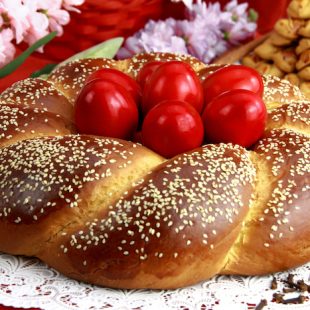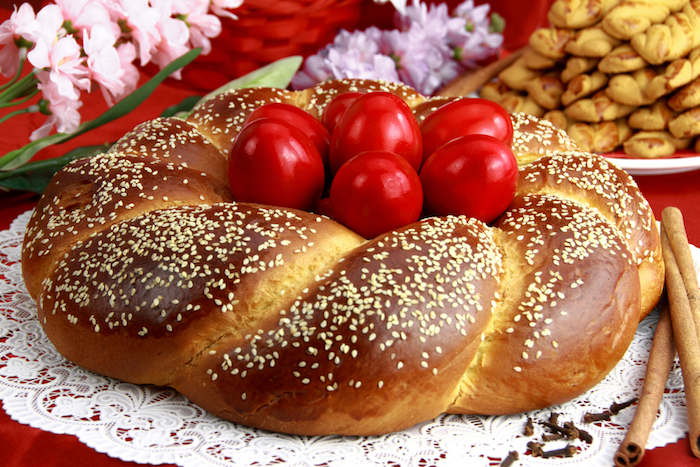
Easter on Crete
What is bigger than Christmas? Well in Crete, it is certainly Easter. Filled with far more passion and fervour, it is a tradition unbroken through generations of families of this island. Each year Easter Sunday will fall on a different date, for 2016 Easter Sunday will be the 1st May.

Before the Easter Holy Week, there is a month of preparation, known as Apokreas. There are specific rituals, most concerning what you can and cannot eat at certain times, but also carnival processions with masked figures, lampooning current events.
Holy Monday starts the main week of Easter (Paska), with religious services every day and, from then on, each will be a Great Day (Megalo). Very particular events occur that lead up to the ringing of the church bells at the stroke of midnight on Easter Saturday, to denote the resurrection of Jesus Christ.
Holy Tuesday sees the local women making Easter biscuits called Koulourakia so the streets will be full of the sweet smell of fresh baking!
On Great Wednesday, the faithful will have themselves anointed with Holy oil and blessed by being touched with a sprig of oregano. This is symbolic of being renewed and cleansed. They will emotionally feel a spiritual and physical uplifting of the soul.
Great Thursday is egg day; this is another symbolic action that is linked to renewed life and the resurrection. The eggs are dyed red with beetroot and onion skin, to signify Christ’s blood. They will be used to decorate bread loaves flavoured with almonds and zest of oranges. The eggs will be stored until Easter Sunday when they will be cracked against each other to see who has good luck for the coming year.
Good Friday is a time of prayer and mourning, the shops close and everyone commemorates the crucifixion. This is an important day for church services and they are adorned with flowers. In particular, the Holy cloth (Epitaphos) symbolising the tomb of Christ, will be decorated by local women with flowers and petals.
The evening services are often accompanied by mournful singing and a slow peal from the church bells. A procession of priests and altar boys carrying crosses followed by the congregation will lead the Epitaphos around the local area and cemetery to bless all, both living and dead. Arriving back at the church everyone will file past the Christ image, and stoop to kiss the cloth.
Saturday has an air of expectancy, rice soup flavoured with lemon and lamb’s offal and Easter biscuits are eaten to signify the beginning of breaking the fast. Just before midnight, everyone is back at the church, which will be illuminated by a single candle of Holy Flame.
The priest announces ‘Christos Anesti’ (‘Christ is risen’), he lights the first candles of the congregation, who in turn pass the flame back through the packed church, until the place is illuminated with light.
From then on the silence is broken by firecrackers, bells, joyful greetings and kisses all around. Bonfires are lit to burn the effigy of Judas. People take great care to carry their individual flames home so that they can use the smoke to mark the sign of the cross on their front door; it will bring them luck for the coming year.
Easter Sunday is a time of celebration of the resurrection, friends and family gather to consume a feast, mostly consisting of spit-roasted lamb. Eggs are cracked and a lot of alcohol is consumed – raki particularly.
As the evening progresses, people express themselves in singing and dancing to their traditional music. It would be a poor party if it didn’t continue till the early hours! After all of that, celebrating Easter Monday is a public holiday, nobody wants to go back to work.
Find out more about Vintage Travel’s villas in Crete here: https://www.vintagetravel.co.uk/villas-in-crete


